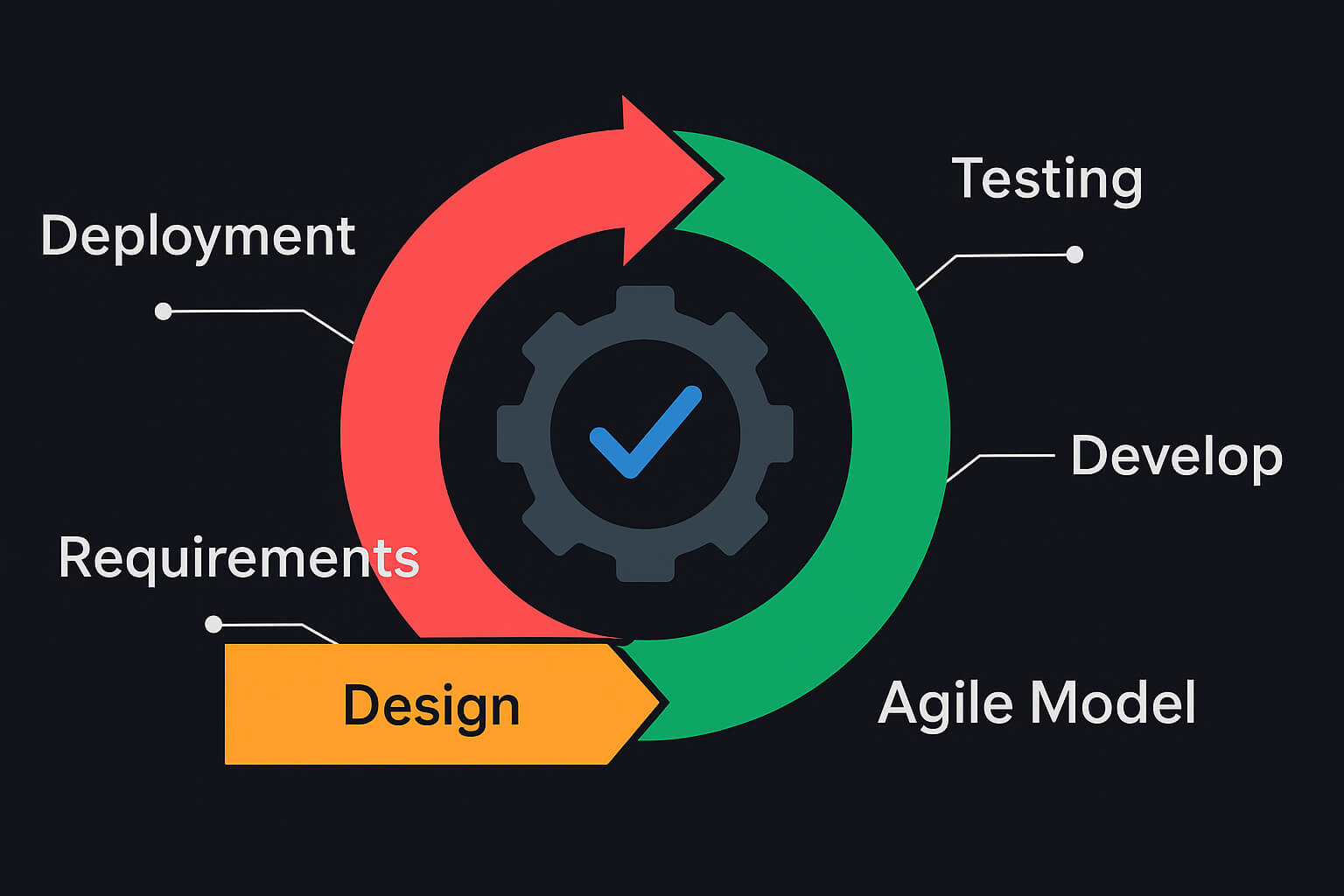 CASE STUDY
CASE STUDY Agile Process Model - Definition and phases of agile model
Agile process model in software engineering represents a revolutionary approach to software development that emphasizes flexibility, collaboration, and rapid delivery. Unlike traditional waterfall methods that follow a rigid, sequential process, Agile embraces change and focuses on delivering working software in short, manageable cycles called iterations or sprints.
What is Agile Model?
Agile is a software development philosophy that prioritizes individuals and interactions, working software, customer collaboration, and responding to change. It breaks down complex projects into smaller, manageable pieces that can be developed, tested, and delivered incrementally. This approach allows development teams to adapt quickly to changing requirements and deliver value to customers more frequently.
The core principle behind Agile is the recognition that software requirements often evolve throughout the development process. Rather than attempting to define all requirements upfront, Agile embraces this uncertainty and builds flexibility into the development process.
Key Phases of Agile Process Model

1. Planning and Requirements Analysis
The Agile process begins with understanding the project vision and gathering initial requirements. Unlike traditional methods, Agile doesn't attempt to capture every requirement in detail upfront. Instead, it focuses on understanding the overall goals and identifying the most critical features to develop first.
2. System Design and Architecture
Based on the initial requirements, the team creates a high-level system design and architecture. This design remains flexible and can be modified as new requirements emerge or existing ones change during development.
3. Development and Implementation
This is where the actual coding takes place. Development occurs in short cycles called sprints, typically lasting 1-4 weeks. Each sprint focuses on implementing a specific set of features that can be demonstrated to stakeholders.
4. Testing and Quality Assurance
Testing in Agile is continuous and integrated throughout the development process. Rather than having a separate testing phase at the end, quality assurance activities run parallel to development, ensuring that bugs are caught and fixed early.
5. Deployment and Release
At the end of each sprint, working software is delivered to stakeholders or end-users. This frequent delivery allows for immediate feedback and helps ensure the product meets user expectations.
6. Review and Retrospective
After each sprint, the team conducts reviews to demonstrate completed work and retrospectives to identify what went well and what could be improved. This continuous improvement cycle is fundamental to Agile success.
When to Choose Agile Development
Agile methodology is particularly well-suited for certain types of projects and environments:
Ideal Scenarios for Agile:
- Uncertain or Evolving Requirements: When project requirements are likely to change or are not fully understood at the beginning
- Complex Projects: Large, complex projects that benefit from being broken into smaller, manageable pieces
- Customer-Focused Development: Projects where regular customer feedback is valuable and feasible
- Innovation Projects: New product development where experimentation and learning are important
- Time-Sensitive Projects: When there's pressure to deliver working software quickly
Projects That May Not Suit Agile:
- Fixed Scope Projects: Projects with well-defined, unchanging requirements and strict regulatory constraints
- Small, Simple Projects: Very small projects where the overhead of Agile processes may not be justified
- Distributed Teams: Projects where team members cannot collaborate effectively due to geographical or organizational barriers
Benefits of Agile Models
Enhanced Flexibility and Adaptability
Agile's iterative nature allows teams to respond quickly to changing market conditions, customer feedback, or technical discoveries. This flexibility is crucial in today's fast-paced business environment.
Improved Customer Satisfaction
Regular delivery of working software ensures that customers see progress and can provide feedback early and often. This leads to higher customer satisfaction and better alignment with user needs.
Faster Time to Market
By delivering working software in short cycles, Agile enables organizations to get products to market faster and start generating value sooner.
Better Risk Management
The iterative approach helps identify and address risks early in the development process, reducing the likelihood of project failure.
Enhanced Team Collaboration
Agile emphasizes face-to-face communication, cross-functional teams, and shared responsibility, leading to better team dynamics and knowledge sharing.
Challenges and Limitations
Resource Intensity
Agile requires active participation from stakeholders and customers throughout the development process. This can be challenging for organizations with limited availability of key personnel.
Documentation Gaps
While Agile values working software over comprehensive documentation, some projects may require more detailed documentation for compliance or maintenance purposes.
Scope Creep Risk
The flexibility that makes Agile powerful can also lead to uncontrolled scope expansion if not properly managed.
Team Experience Requirements
Agile works best with experienced, self-organizing teams. Organizations with less experienced developers may need additional support and training.
Scaling Challenges
While Agile works well for small to medium-sized teams, scaling Agile practices to large, distributed organizations can be complex and requires careful planning.
Best Practices for Agile Success
Establish Clear Communication Channels
Regular stand-up meetings, sprint planning sessions, and retrospectives are essential for maintaining team alignment and continuous improvement.
Maintain a Product Backlog
A well-maintained product backlog that prioritizes features based on customer value ensures that the most important work gets done first.
Embrace Continuous Integration
Automated testing and continuous integration practices help maintain code quality and enable rapid, reliable deployments.
Focus on Customer Value
Every feature and task should be evaluated based on the value it provides to end-users or the business.
Invest in Team Development
Provide training and support to help team members develop the skills needed for effective Agile development.
Conclusion
Agile Process Model has transformed software development by providing a framework that embraces change, prioritizes customer value, and enables rapid delivery of working software. While it's not suitable for every project or organization, Agile offers significant benefits for teams working on complex, evolving projects where flexibility and customer feedback are important.
The key to Agile success lies not in rigidly following a specific process, but in embracing its core values and principles while adapting practices to fit the unique needs of each project and organization.
